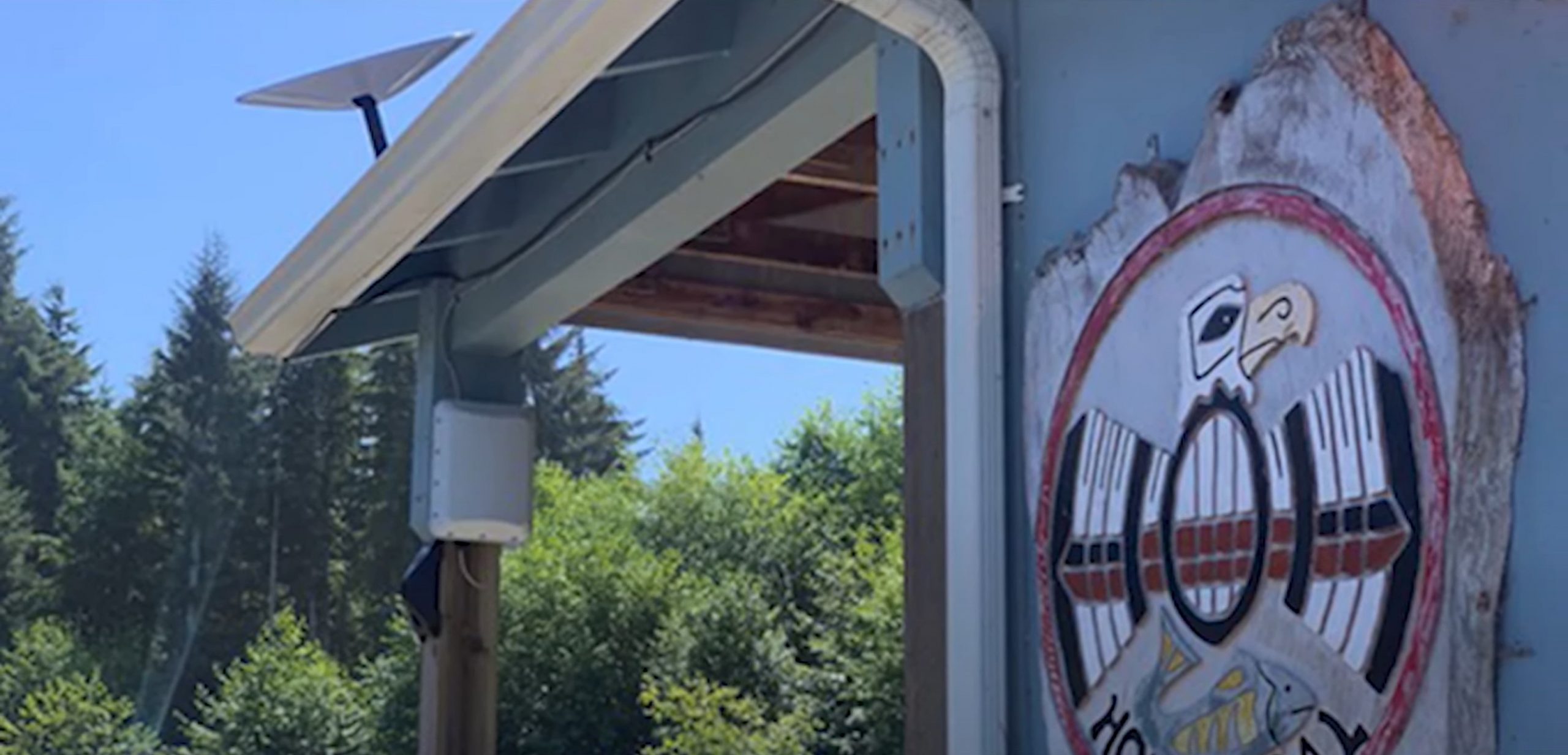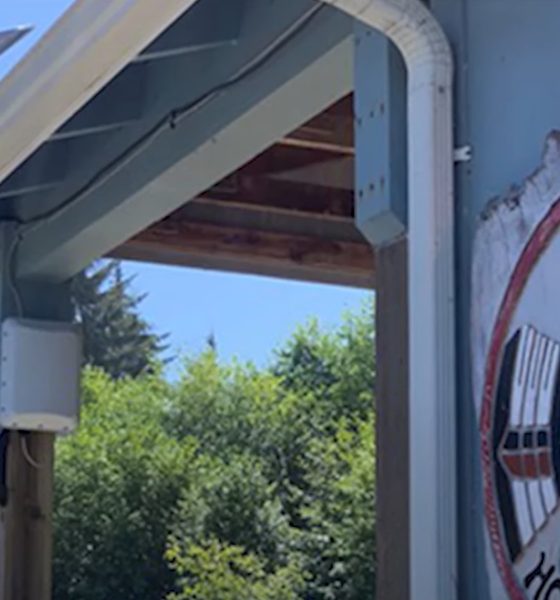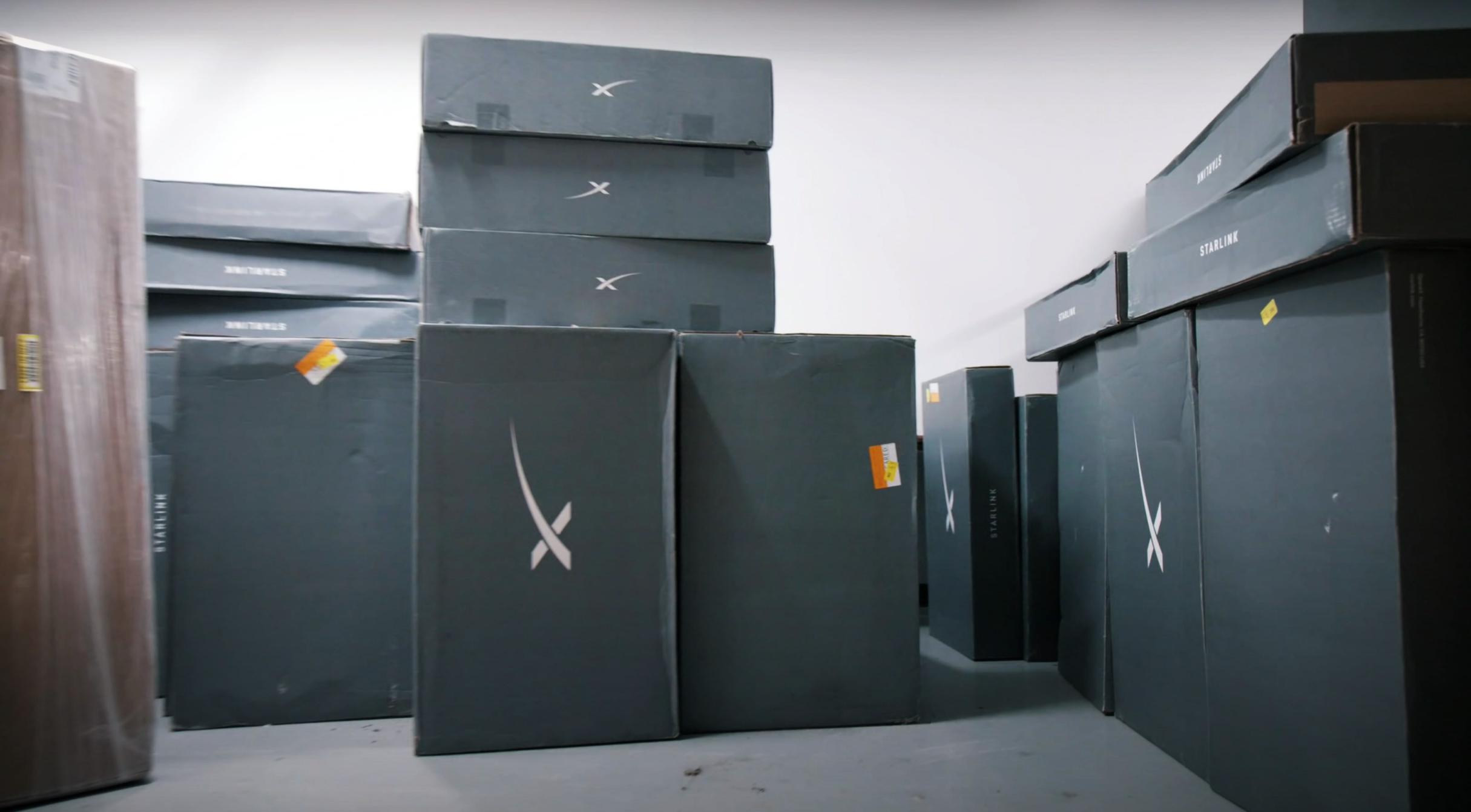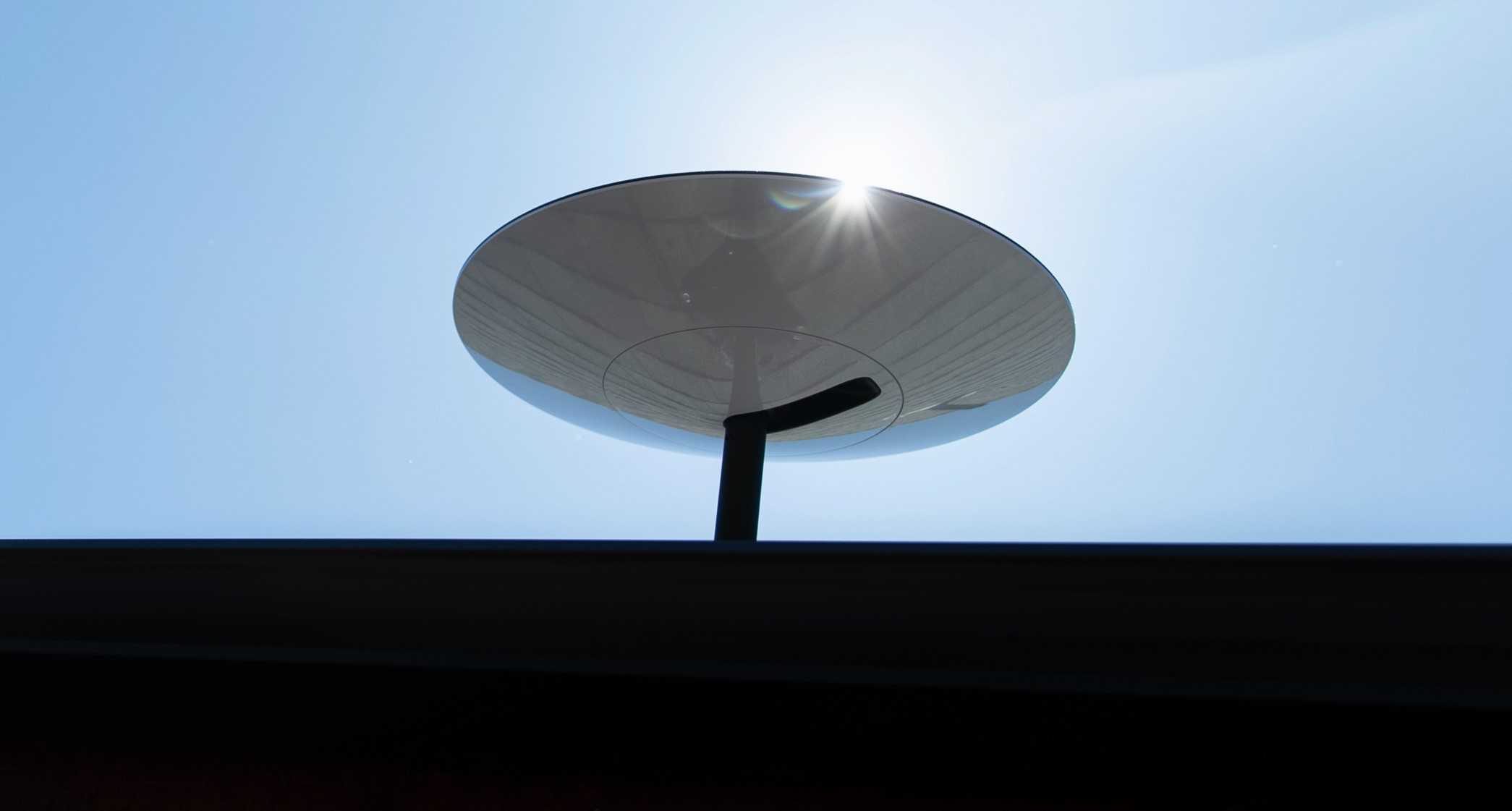

News
Elon Musk’s Starlink takes the fight to Dish Network over broadband concerns
Elon Musk’s Starlink and Dish Network are currently butting heads at the Federal Communications Commission (FCC) over the latter’s attempt to block an essential designation that SpaceX needs to get FCC broadband funding. Dish filed a petition against Starlink in late February, and a few days ago, SpaceX issued its response.
The dispute between the two companies is related to a number of FCC proceedings, including a petition from Starlink seeking designation as an Eligible Telecommunications Carrier (ETC) under the Communications Act. This designation is required in some states where SpaceX won funding to deploy its satellite-based internet to 642,925 underserved homes and businesses in 35 states. Dish Network, for its part, has asked the FCC to deny the private space firm the needed status in the 12 GHz band.

What’s interesting is that Dish is a satellite TV provider, which means that it is not even a direct competitor to SpaceX’s Starlink service. Dish is building a 5G mobile broadband network that could eventually use spectrum from the 12 GHz band that the company currently uses for its satellite TV services. Thus, Dish notes that if SpaceX also uses 12 GHz frequencies, Starlink could result in interference.
“Dish does not object to ETC status for SpaceX based on its access to other frequency bands. But, to the extent that the requested ETC designation is based on the 12 GHz band, it should be denied or deferred, pending the resolution of the DBS interference concerns arising in that band from SpaceX’s proposed modification of its satellite system, and the sharing questions presented in the Commission’s recently initiated 12 GHz rulemaking,” Dish wrote.

SpaceX’s response to Dish’s request to the FCC was equally sharp, noting that the satellite TV provider’s opposition is without merit. The Elon Musk-led firm noted that Dish’s efforts would only result in delaying what really matters most for Starlink–providing high-speed internet access to those who need it the most.
“Dish’s Opposition ignores and conflicts with the Commission’s clear decision to permit applicants for the Rural Digital Opportunity Fund (“RDOF”) Phase I auction to rely on spectrum in the 12.2-12.7 GHz band (“12 GHz band”) to meet their RDOF obligations. This facially spurious filing is only the latest example of DISH’s abuse of Commission resources in its misguided effort to expropriate the 12 GHz band. The Commission should reject Dish’s Opposition as a baseless attempt to obstruct the ETC and RDOF processes, the result of which would serve only to delay what matters most—connecting unserved Americans,” SpaceX noted.
The private space enterprise also noted that Dish’s arguments reveal a goal to obstruct and hamstring a competitor, especially since the FCC had already decided to let ISPs utilize the 12 GHz band for subsidized broadband connections. “DISH’s argument now that its opposition to the modification somehow renders those Commission decisions meaningless is nonsensical,” SpaceX wrote.
Read Dish’s FCC filing against Starlink below.
(as Filed) DISH Opposition to SpaceX ETC Designation by Simon Alvarez on Scribd
SpaceX’s response to Dish’s FCC request could be accessed below.
Reply to DISH Opposition to ETC (03!01!2021) by Simon Alvarez on Scribd
Don’t hesitate to contact us for news tips. Just send a message to tips@teslarati.com to give us a heads up.

News
Tesla FSD fleet is nearing 7 billion total miles, including 2.5 billion city miles
As can be seen on Tesla’s official FSD webpage, vehicles equipped with the system have now navigated over 6.99 billion miles.

Tesla’s Full Self-Driving (Supervised) fleet is closing in on almost 7 billion total miles driven, as per data posted by the company on its official FSD webpage.
These figures hint at the massive scale of data fueling Tesla’s rapid FSD improvements, which have been quite notable as of late.
FSD mileage milestones
As can be seen on Tesla’s official FSD webpage, vehicles equipped with the system have now navigated over 6.99 billion miles. Tesla owner and avid FSD tester Whole Mars Catalog also shared a screenshot indicating that from the nearly 7 billion miles traveled by the FSD fleet, more than 2.5 billion miles were driven inside cities.
City miles are particularly valuable for complex urban scenarios like unprotected turns, pedestrian interactions, and traffic lights. This is also the difference-maker for FSD, as only complex solutions, such as Waymo’s self-driving taxis, operate similarly on inner-city streets. And even then, incidents such as the San Francisco blackouts have proven challenging for sensor-rich vehicles like Waymos.
Tesla’s data edge
Tesla has a number of advantages in the autonomous vehicle sector, one of which is the size of its fleet and the number of vehicles training FSD on real-world roads. Tesla’s nearly 7 billion FSD miles then allow the company to roll out updates that make its vehicles behave like they are being driven by experienced drivers, even if they are operating on their own.
So notable are Tesla’s improvements to FSD that NVIDIA Director of Robotics Jim Fan, after experiencing FSD v14, noted that the system is the first AI that passes what he described as a “Physical Turing Test.”
“Despite knowing exactly how robot learning works, I still find it magical watching the steering wheel turn by itself. First it feels surreal, next it becomes routine. Then, like the smartphone, taking it away actively hurts. This is how humanity gets rewired and glued to god-like technologies,” Fan wrote in a post on X.
News
Tesla starts showing how FSD will change lives in Europe
Local officials tested the system on narrow country roads and were impressed by FSD’s smooth, human-like driving, with some calling the service a game-changer for everyday life in areas that are far from urban centers.

Tesla has launched Europe’s first public shuttle service using Full Self-Driving (Supervised) in the rural Eifelkreis Bitburg-Prüm region of Germany, demonstrating how the technology can restore independence and mobility for people who struggle with limited transport options.
Local officials tested the system on narrow country roads and were impressed by FSD’s smooth, human-like driving, with some calling the service a game-changer for everyday life in areas that are far from urban centers.
Officials see real impact on rural residents
Arzfeld Mayor Johannes Kuhl and District Administrator Andreas Kruppert personally tested the Tesla shuttle service. This allowed them to see just how well FSD navigated winding lanes and rural roads confidently. Kruppert said, “Autonomous driving sounds like science fiction to many, but we simply see here that it works totally well in rural regions too.” Kuhl, for his part, also noted that FSD “feels like a very experienced driver.”
The pilot complements the area’s “Citizen Bus” program, which provides on-demand rides for elderly residents who can no longer drive themselves. Tesla Europe shared a video of a demonstration of the service, highlighting how FSD gives people their freedom back, even in places where public transport is not as prevalent.
What the Ministry for Economic Affairs and Transport says
Rhineland-Palatinate’s Minister Daniela Schmitt supported the project, praising the collaboration that made this “first of its kind in Europe” possible. As per the ministry, the rural rollout for the service shows FSD’s potential beyond major cities, and it delivers tangible benefits like grocery runs, doctor visits, and social connections for isolated residents.
“Reliable and flexible mobility is especially vital in rural areas. With the launch of a shuttle service using self-driving vehicles (FSD supervised) by Tesla in the Eifelkreis Bitburg-Prüm, an innovative pilot project is now getting underway that complements local community bus services. It is the first project of its kind in Europe.
“The result is a real gain for rural mobility: greater accessibility, more flexibility and tangible benefits for everyday life. A strong signal for innovation, cooperation and future-oriented mobility beyond urban centers,” the ministry wrote in a LinkedIn post.
News
Tesla China quietly posts Robotaxi-related job listing
Tesla China is currently seeking a Low Voltage Electrical Engineer to work on circuit board design for the company’s autonomous vehicles.

Tesla has posted a new job listing in Shanghai explicitly tied to its Robotaxi program, fueling speculation that the company is preparing to launch its dedicated autonomous ride-hailing service in China.
As noted in the listing, Tesla China is currently seeking a Low Voltage Electrical Engineer to work on circuit board design for the company’s autonomous vehicles.
Robotaxi-specific role
The listing, which was shared on social media platform X by industry watcher @tslaming, suggested that Tesla China is looking to fill the role urgently. The job listing itself specifically mentions that the person hired for the role will be working on the Low Voltage Hardware team, which would design the circuit boards that would serve as the nervous system of the Robotaxi.
Key tasks for the role, as indicated in the job listing, include collaboration with PCB layout, firmware, mechanical, program management, and validation teams, among other responsibilities. The role is based in Shanghai.
China Robotaxi launch
China represents a massive potential market for robotaxis, with its dense urban centers and supportive policies in select cities. Tesla has limited permission to roll out FSD in the country, though despite this, its vehicles have been hailed as among the best in the market when it comes to autonomous features. So far, at least, it appears that China supports Tesla’s FSD and Robotaxi rollout.
This was hinted at in November, when Tesla brought the Cybercab to the 8th China International Import Expo (CIIE) in Shanghai, marking the first time that the autonomous two-seater was brought to the Asia-Pacific region. The vehicle, despite not having a release date in China, received a significant amount of interest among the event’s attendees.








